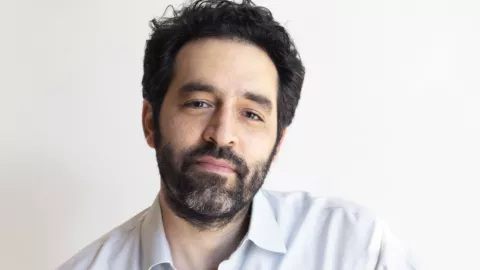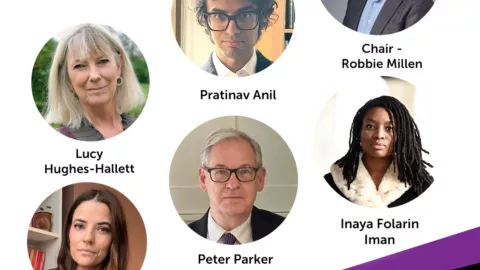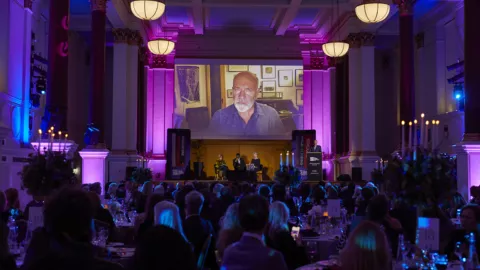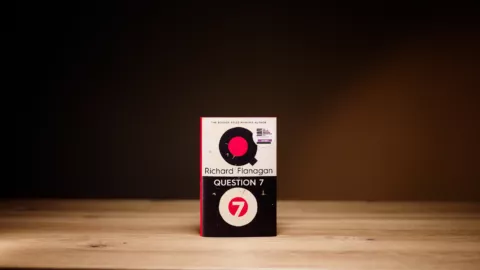
Jonathan Blitzer Longlist Interview
9 October 2024
How does it feel to reach the shortlist for the Samuel Johnson Prize?
Naturally one feels honoured and deeply moved. It is especially gratifying to have this book, which took twelve years to research and write, recognised in the UK, for in many ways it is a long letter of respect and affection for a nation that birthed this cadre of men, the likes of which will not be seen again. A celebrity is known for being known, a hero for what he or she has done. These were men of action and deed. In a time of discretion and decorum, they were unprepared to yield their feelings to analysis and quite unwilling to litter the world with their emotions. Men so confident in their masculinity that by morning they might chase butterflies in the sun, by noon sketch the beginnings of a watercolour, and yet by late afternoon cast themselves against the flanks of Everest, or indeed the German frontlines. They really did wear tweeds as they tramped across Tibet, and read poetry to each other in the snow at 23,000 feet.
What research did you do for writing your book?
My interest in this story began in the spring of 1996 as I completed a 4,000 mile overland journey from Chengdu in western China through southeastern Tibet to Lhasa and on to Kathmandu. Upon my return to Canada I purchased the three official accounts of the 21-24 Everest expeditions. These became the first acquisitions in a research collection for this book that would grow to include more than 600 volumes.
What interested me from the start was not whether Mallory reached the summit, but rather why on that fateful day he kept going, knowing quite possibly that he was walking to his death. My sense was that for the war generation which had seen so much of death, life mattered less than the moments of being alive.
Having worked through the fundamental archive materials at the Royal Geographic Society and Alpine Club, I set out to find, successfully as it turned out, where each of the 26 men who went on these expeditions had been every day of the Great War, and to ascertain what they had experienced at the Front. This research effort consumed a decade and led to some fifty or more archives in six countries. Among the many discoveries were the previously unknown 1921 diaries of Oliver Wheeler, the unsung Canadian surveyor who found the doorway to the mountain, the route to the North Col. Yet another major research challenge took me into the history of the Raj and the complex diplomatic manoeuvres of Lord Curzon, Charles Bell, and the frontier cadre engaged in the Great Game.
A second major phase of the research entailed several return journeys to Nepal and Tibet. Having delved into the literature, I went back to Everest in 2000 with fresh eyes. Accompanying me was an extraordinarily insightful man and one of the greatest of Himalayan climbers, Dorjee Lhatoo, former head of the Himalayan Mountaineering Institute in Darjeeling, the training ground of all great Indian climbers. For two months, Dorjee and I walked in the footsteps of the British Reconnaissance of 1921. Later we worked together in Darjeeling, as he introduced me to what remained of the settlement the British had known.
The longer I spent with Tibetans in the environs of Everest, the more interested I became in what the mountain meant to them, and how their great-grandparents might have viewed the arrival and activities of the British climbers, the first Europeans many of them would have known. A main point of interface was the Rongbuk monastery, headed by its charismatic Abbot, Ngawang Tenzin Norbu, or Dzatrul Rinpoche. I was able to secure a copy of his namthar, or spiritual autobiography, and have it was translated into English for the first time by a revered Buddhist monk in Kathmandu, Lama Urgyen. To know what life at Rongbuk had been like in 1921-24 I later spent many months in Nepal and Tibet, travelling with Matthieu Ricard and studying the Buddhist dharma, and living at Thubten Chöling, a monastery established after the Chinese conquest of Tibet in Nepal by Dzatrul Rinpoche’s spiritual heir, Trulshig Rinpoche. Finally, to understand Tibetan notions of sacred geography, I turned to a brilliant anthropologist at Cambridge, Hildegard Diemberger, who opened my mind to the real meaning of mountains.Autumn1It was Hildegard who showed me that the entire time the British were scrambling across the flanks of Everest, they were walking in mystic space.
For a better sense of this rather prodigious research effort please see the annotated bibliography to the book, a document that runs to some 55 pages.
How do you feel about the status/ popularity of non-fiction books in general?
I only read non-fiction so I am not really one to say. But as an anthropologist and biologist by training and a historian by inclination, it has always seemed to me that nothing can be more wondrous than what is already unfolding in the real world. Some years ago a book came out suggesting that plants enjoyed classical music. As a botanical friend said at the time, why would a plant give a shit about Mozart? And even if it did, he added, why should that impress us? “They can eat light. Isn’t that enough?”
What is your favourite non-fiction book and why?
Seven Pillars of Wisdom by T.E. Lawrence, in part because of the brilliant first line, “Some of the evil of my tale may have been inherent in our circumstances”. To those that would single him out as a hero, he reveals not just how sordid life in the desert campaign had been, but in a sense how much he had enjoyed it. The first four pages are to my mind on par with Owen’s Dulce et Decorum Pro Patria Mori as a blistering repudiation of war. I also love this book because I have a leather bound copy purchased by my grandfather, signed by him and dated 1/8/35. A decade before I was born, he and my grandmother died in a car accident in 1943, while my father was in London with the Canadian army. My grandfather, Captain Daniel Wade Davis, served as a medical officer in France with the Royal Army Medical Corps in 1915-1916, and later in England with the Canadian Army Medical Corps, 1916-1918. Because of what my father and grandfather and their generations did, I never had to fight in a German war.
What are you working on next?
Since finishing Into the Silence, I have published two books, The Sacred Headwaters: the Fight to Save the Stikine, Skeena and the Nass and River Notes: A Human and Natural History of the Colorado. I have also just completed as guest curator a book length museum catalogue for No Strangers: Ancient Wisdom in the Modern World, an exhibit that will go up in November at the Annenberg Space for Photography in Los Angeles. I am currently working on a second book of my photographs (2000-2012), scheduled for publication in 2013, and am also bringing out this year the complete 1921 Everest diaries of Oliver Wheeler, the first Canadian on Everest, along with commentary and rare and unseen photographs from the expedition.

10 April 2025

17 December 2024

19 November 2024